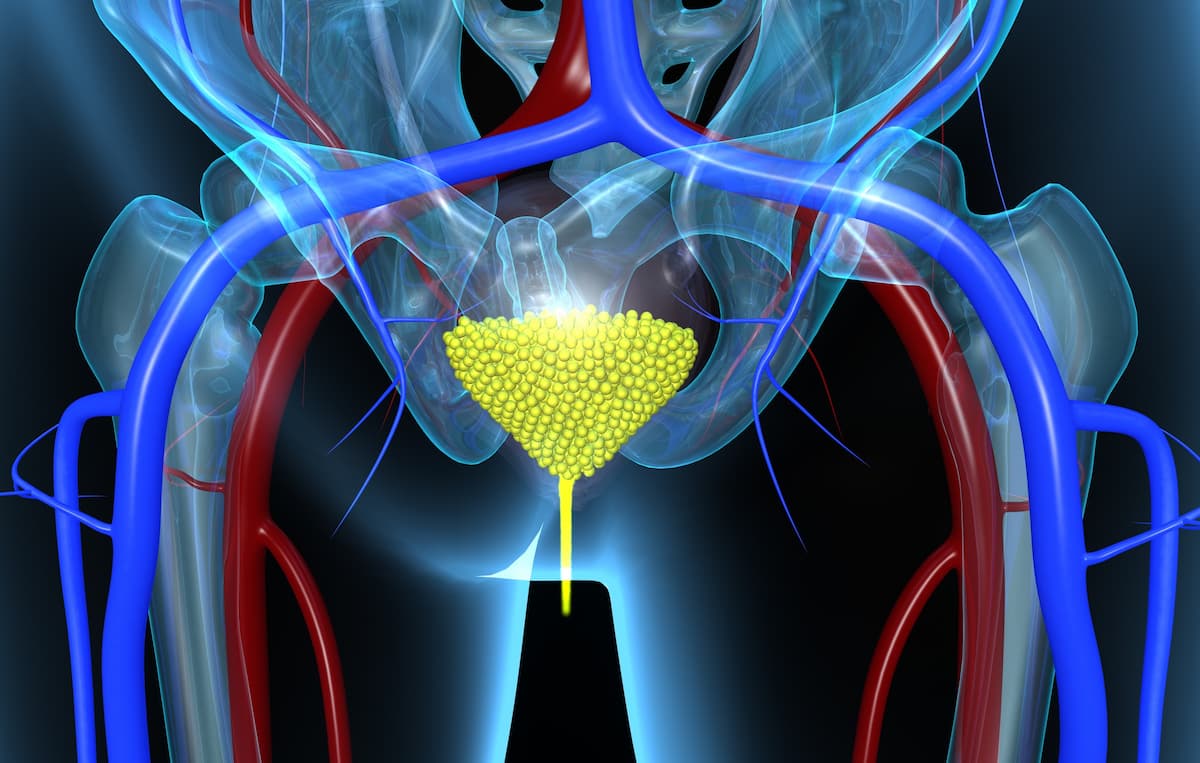Lasting Responses Observed With TAR-200 in BCG-Unresponsive NMIBC
All patients with a response to TAR-200 did not have progression to muscle-invasive bladder cancer or metastatic disease in the SunRISe-1 trial.
“In conclusion, TAR-200 monotherapy provides a rapid and high CR rate [for patients with] Bacillus Calmette-Guérin–unresponsive high-risk NMIBC,” according to Joseph Jacob, MD, MCR.

Patients with Bacillus Calmette–Guérin-unresponsive high-risk non–muscle-invasive bladder cancer (NMIBC) had enduring responses following treatment with TAR-200, according to data from the phase 2 SunRISe-1 trial (NCT04640623) presented during the American Urological Association (AUA) 2024 Annual Meeting.1
At the January 2, 2024, data cutoff, 82.8% (95% CI, 70.6%-91.4%) of response-evaluable patients who were treated with TAR-200 monotherapy (n = 58) achieved a centrally assessed complete response (CR) and 86.2% (95% CI, 74.6%-93.9%) achieved an investigator-assessed CR. Additionally, the Kaplan-Meier estimates for CR rate at 6 and 12 months were 75.7% (95% CI, 59.1%-86.3%) and 61.9% (95% CI, 41.1%-77.1%), respectively. Nearly all (98%) CRs were achieved at the first disease assessment at week 12.
Additionally, most responses (85%) were ongoing at the clinical cutoff, with 4 of 5 patients who completed 2 years of treatment remaining in response. Notably, no responders (n = 48) progressed to muscle-invasive bladder cancer or metastatic disease and only 1 responder underwent radical cystectomy. The Kaplan-Meier estimates for the 6-, 12-, and 18-month duration of response (DOR) rates were 87.0% (95% CI, 69.0%-94.9%), 74.6% (95% CI, 49.8%-88.4%), and 74.6% (95% CI, 49.8%-88.4%), respectively.
“Radical cystectomy is a life-changing operation with considerable morbidity and quality of life considerations. Moreover, there is a 90-day mortality risk of up to 8%. As such, there is a high unmet need for bladder-sparing therapies in this population,” Joseph Jacob, MD, MCR, an associate professor of urology at SUNY Upstate Medical University Hospital in Syracuse, New York, said during a presentation of the data. “TAR-200 is a novel targeted releasing system designed for sustained local release of gemcitabine into the bladder. It is placed in the clinic with a urinary placement catheter and it takes approximately 2 to 3 minutes. Removal is with a cystoscope and is very similar to how you would remove a ureteral stent. In my practice, my nurse practitioner places the TAR-200 devices and removes them.”
SunRISe-1 enrolled patients with histologically confirmed high-risk NMIBC carcinoma in situ (CIS) with or without papillary disease. Eligible patients also needed to have an ECOG performance status of 2 or less, persistent or recurrent disease within 12 months of the completion of Bacillus Calmette–Guérin, and were unresponsive to Bacillus Calmette–Guérin and not receiving radical cystectomy.
Patients were randomly assigned 2:1:1 to receive TAR-200 plus cetrelimab (cohort 1; n = 55), TAR-200 monotherapy (cohort 2; n = 85), or cetrelimab monotherapy (cohort 3; n = 28). There was also a fourth cohort of approximately 50 patients with papillary-only high-risk NMIBC who were treated with TAR-200 monotherapy. TAR-200 was administered every 3 weeks for the first 24 weeks, then every 12 weeks through week 96. Findings from cohort 2 were presented during the 2024 AUA Annual Meeting.
The primary end point in cohorts 1 through 3 was overall CR rate. Key secondary end points included DOR, overall survival, safety, and tolerability. The primary end point in cohort 4 was 12-month disease-free survival rate.
At baseline, patients in cohort 2 had a median age of 71 years (range, 40-88). Most patients were male (80.0%), White (72.9%), and former nicotine users (57.6%), and had an ECOG performance status of 0 (91.8%), declined radical cystectomy (96.5%), and CIS only (67.1%). The median number of total doses of prior Bacillus Calmette–Guérin was 12 (range, 7-42) and the median time from last Bacillus Calmette–Guérin to CIS diagnosis was 3.4 months (range, 0-22).
Additional findings from a subgroup analysis showed that the high CR rate with TAR-200 monotherapy was consistent across patient subgroups. Notably, patients from the Asia Pacific region (n = 7), females (n = 13), and those with CIS with papillary disease (n = 20) achieved CR rates of 100% (95% CI, 59.0%-100.0%), 92.3% (95% CI, 64.0%-99.8%), and 90.0% (95% CI, 68.3%-98.8%), respectively.
In terms of safety, most adverse effects (AEs) were grade 1 or 2 in severity and occurred within 12 weeks of treatment initiation. Most patients experienced an any-grade AE (85.9%) and 22.4% experienced a grade 3 or higher AE. Common any-grade treatment-related AEs (TRAEs) included pollakiuria (35.3%), dysuria (29.4%), micturition urgency (15.3%), and urinary tract infection (15.3%). Grade 3 or higher TRAEs included urinary tract pain (2.4%), as well as bladder pain, renal impairment, urinary retention, urosepsis, urinary tract infection, and dysuria which occurred in 1 patient each. Four patients discontinued treatment due to AEs and there were no treatment-related deaths.
In December 2023, the FDA granted breakthrough therapy designation to TAR-200 for use in the treatment of patients with Bacillus Calmette-Guérin–unresponsive, high-risk NMIBC who are not candidates for or opted not to receive radical cystectomy. The regulatory decision was supported by findings from SunRISe-1.2
“In conclusion, TAR-200 monotherapy provides a rapid and high CR rate [for patients with] Bacillus Calmette-Guérin–unresponsive high-risk NMIBC,” Jacob said.
References
- Necchi A, Daneshmand S, Simone G, et al. TAR-200 in patients with Bacillus Calmette–Guérin-unresponsive high-risk non–muscle-invasive bladder cancer: results from SunRISe-1 study. J Urol. Published online May 1, 2024. doi:10.1097/01.JU.0001015816.87470.c9.01
- Johnson & Johnson’s investigational TAR-200 granted US FDA breakthrough therapy designation for the treatment of high-risk non-muscle-invasive bladder cancer. News release. Johnson & Johnson. December 4, 2023. Accessed May 3, 2024. https://www.jnj.com/media-center/press-releases/johnson-johnsons-investigational-tar-200-granted-u-s-fda-breakthrough-therapy-designation-for-the-treatment-of-high-risk-non-muscle-invasive-bladder-cancer
Newsletter
Stay up to date on recent advances in the multidisciplinary approach to cancer.